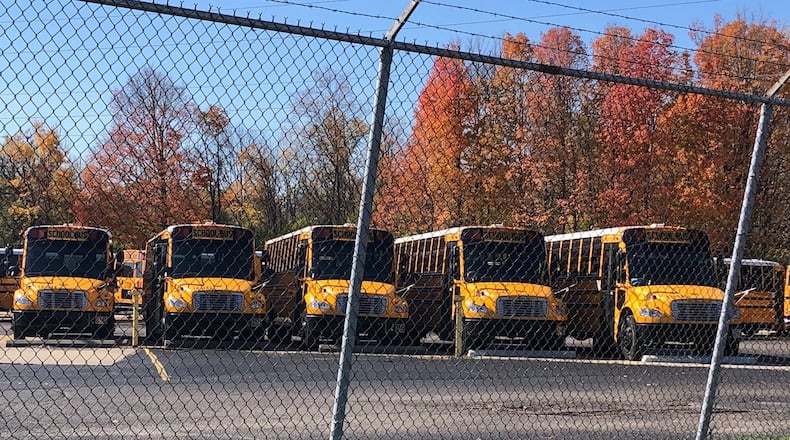MAIN PAGE: See all coronavirus headlines in one place
“I don’t know how much that loss will be, but I’m estimating about 25% less for this payment,” Xenia Treasurer Carolyn Huber said this week. “I’m estimating a 40% loss in our next fiscal year budget, beginning July 1.”
That’s not a 25-40% hit to the district’s bottom line, as income tax makes up only a small portion of Xenia’s total budget. But in some districts like Troy, income tax accounts for almost 25% of district revenue.
Most treasurers said they expect some decrease in income tax revenue, with Eaton’s Rachel Tait predicting “a substantial hit,” but several said it was too early to estimate the size of the decline.
Meanwhile, a wide variety of districts are concerned about losses in state funding and local property tax revenue.
RELATED: College refund policies vary by start date, payment method
“We are hearing the state might reduce the state budget,” Dayton Public Schools Treasurer Hiwot Abraha said, referring to an expected crash in state sales tax revenue. “ … Dayton depends heavily on the state revenue (74% of general fund budget), so if that happens, Dayton will be hit hard.”
Some treasurers project the state could cut school funding as soon as this summer, while others don’t think any reduction would come until summer 2021.
Milton-Union Treasurer Kay Altenburger echoed several of her colleagues with worries about property taxes, the majority of which go to fund schools. Altenburger said with many families and businesses struggling, the second half of 2020 could see a surge in delinquent payments.
RELATED: Feds say direct deposit stimulus payments coming soon
In the end, there are a ton of moving parts – income and property taxes, federal and state funding, school district spending and saving, lower investment earnings, and significantly, how long the current economic slowdown lasts.
“In my 30 years as a school treasurer/CFO, I can think of no other time where it may have been so uncertain to try to predict the financial future for Ohio schools,” Fairborn treasurer Kevin Philo said. “Like the rest of the world, we are in the position of wait and see what the future holds.”
Still paying staff
The clear majority of school spending goes to salaries and benefits of all the employees who make schools run. Teachers are still working and being paid, as the learning process moves online. Despite the fact that many school bus drivers, food service workers and aides are largely sitting idle now, they’re still being paid.
New Lebanon treasurer Kaitlin Huck pointed to two sections of Ohio law that say both teaching and nonteaching staff must “be paid for all time lost when the schools in which they are employed are closed due to an epidemic or other public calamity.”
Several districts said some of their non-teaching staff are still working, either on regular duties such as clerical work, or taking needed training, or preparing and delivering meals to families.
RELATED: State says peak number of cases likely lower
With spring sports at risk of full cancellation, many districts are taking a wait-and-see approach toward paying the supplemental contracts of those coaches, which generally range from $500 to $5,000.
But schools are saving some money during the closures. Trotwood-Madison treasurer Janice Allen pointed to savings on material and supply costs, contracted services, plus staff training and conferences. Springboro treasurer Terrah Floyd rattled off several other categories.
“We are anticipating a savings in substitute teacher costs, field trip costs, utility costs (as they have been set to minimums), and fuel costs for buses,” Floyd said.
Floyd and other treasurers said technology costs have increased a bit as schools provide families with computers and internet access.
Watch and wait
As Philo said, school officials don’t know when they’ll get back to normal. Huck said a worst case would be an extended recession that affects schools and communities in multiple ways.
“We are first and foremost concerned about our community,” she said. “We recognize that many of our district’s constituents (like all Ohioans) are facing financial difficulties due to the restrictions in place to fight COVID-19. Many households are facing reduced or no income during this time.”
RELATED: State officials, e-school veterans give home-school tips
Alternburger and Allen held out hope that some of the $13 billion allocated to schools in the federal stimulus bill might reach local schools.
In the meantime, Eaton’s Tait said her district is delaying capital projects and putting off some hiring. Other schools are just watching, waiting and analyzing, according to Carlisle treasurer Dan Bassler.
“We are not taking any steps right now,” Bassler said. “We will continue to monitor the situation and make the best decision possible with the information at hand.”
About the Author

